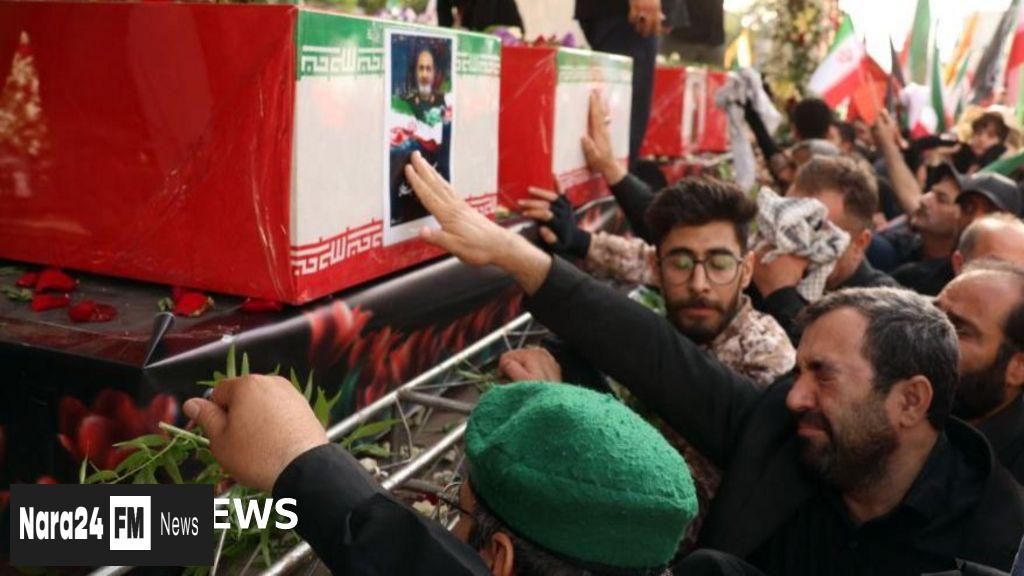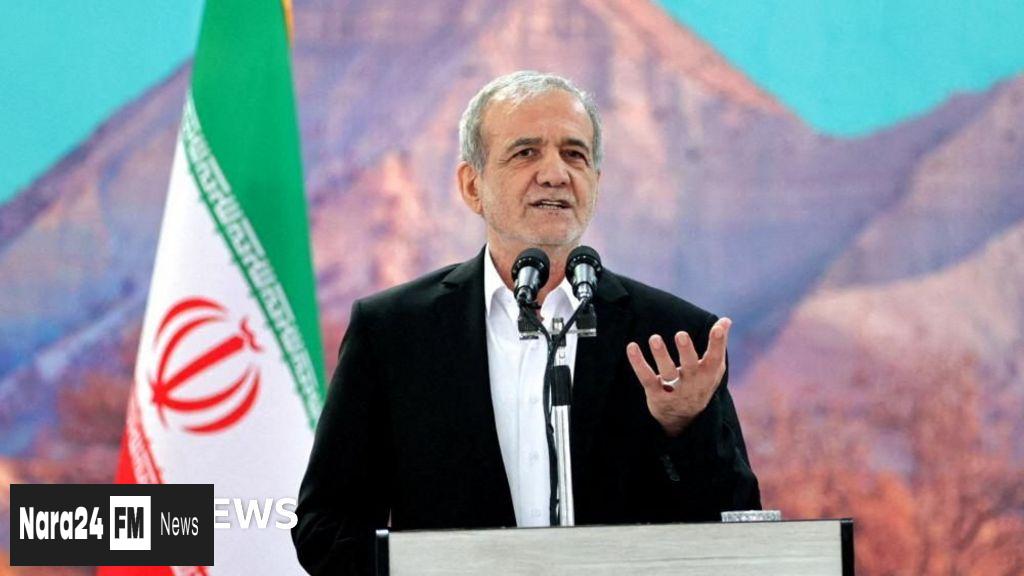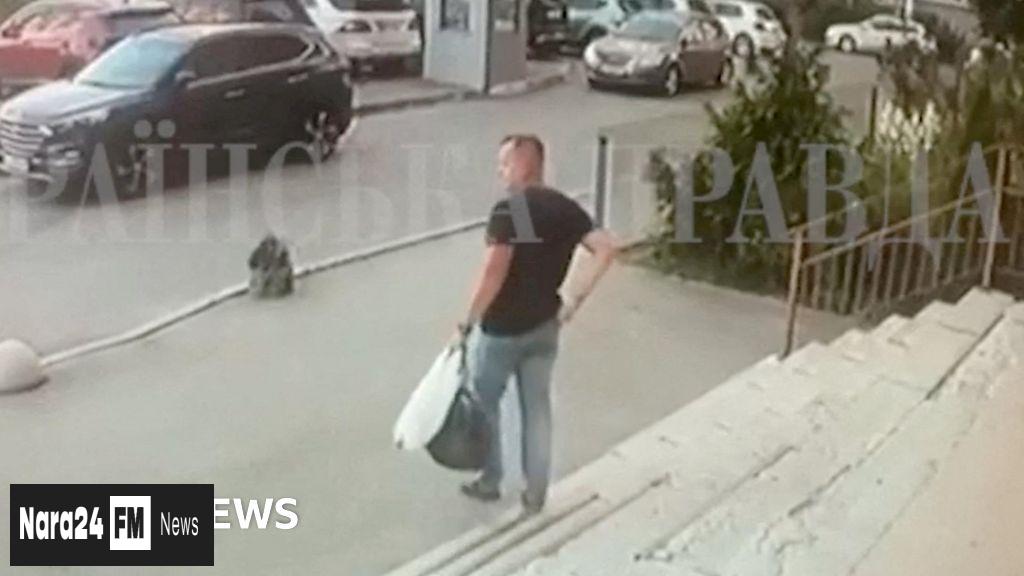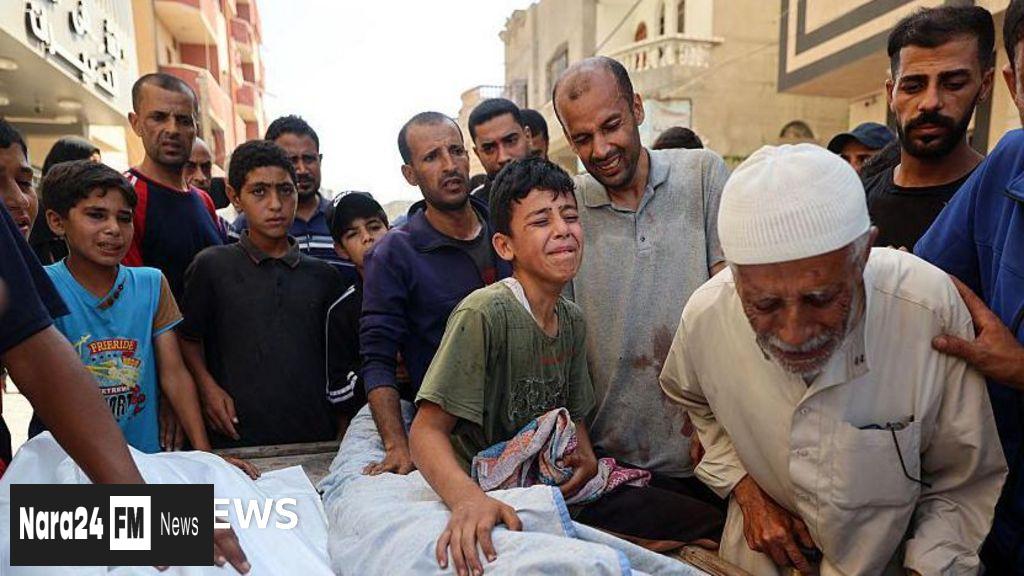In This Article
- State Funeral for Iran Casualties
- Conflict Details and Ceasefire
- Key Figures Mourned
- Potential for Further Military Action
- Trump's Remarks and Iran's Response
- IAEA's Assessment and Future Uncertainty
Key Takeaways
- Approximately 60 military commanders, nuclear scientists, and civilians lost their lives in the 12-day conflict between Iran and Israel.
- Mohammad Bagheri, the highest-ranking military officer in Iran, was among those who perished in the conflict.
- US President Donald Trump has stated he would consider bombing Iran again if intelligence indicates uranium enrichment levels become concerning.
- The International Atomic Energy Agency (IAEA) is yet to determine the extent of damage to Iran's nuclear capabilities.
- The future direction of Iran is uncertain following the loss of key figures in the recent conflict.
In the heart of Tehran, a solemn state funeral was held this weekend, marking the loss of approximately 60 military commanders, nuclear scientists, and civilians who perished during the 12-day conflict between Iran and Israel. The ceremony was a poignant display of grief, as crowds dressed in black, chanted slogans, and waved Iranian flags, holding portraits of the deceased.
The conflict concluded with a ceasefire earlier this week, following the intervention of the United States, which bombarded key nuclear sites in Iran. The ceasefire came after intense aerial bombardments by Iran, resulting in 28 casualties in Israel.
Among the mourned was Mohammad Bagheri, the highest-ranking military officer in Iran, who served as the Chief of Staff of Iran's Armed Forces. Bagheri was to be laid to rest alongside his wife and daughter, who were killed in an Israeli strike. In total, Iranian authorities reported 627 fatalities.
The funeral was attended by notable figures such as Iranian President Masoud Pezeshkian and Rear Admiral Ali Shamkhani, an advisor to the country's supreme leader, Ayatollah Ali Khamenei. Shamkhani, who was injured in an Israeli strike earlier this month, was also among those honored.
The potential for further military action remains a topic of contention, with US President Donald Trump stating he would "absolutely" consider bombing Iran again if intelligence indicated uranium enrichment levels became concerning. Trump's remarks followed the bombings of Iranian nuclear sites and his assertions that Iran was "decimated."
Trump also claimed to have knowledge of Khamenei's whereabouts, stating he "would not let Israel, or the US Armed Forces... terminate his life." However, Iran's foreign minister, Abbas Araghchi, has warned Trump against making "disrespectful" comments about Khamenei.
The International Atomic Energy Agency (IAEA) has yet to determine the extent of damage to Iran's nuclear capabilities, including highly-enriched uranium and centrifuges needed for purification. The IAEA's director general Rafael Grossi has stated that a military solution would not achieve the goal of preventing Iran from building nuclear weapons.
The future of Iran remains uncertain, as its residents grapple with the aftermath of the recent conflict. The loss of these key figures raises questions about the direction Iran will take in the days ahead.








Comments (0)
Leave a Comment
Be the first to comment on this article!